11 tips for good light

Our sense of well-being increases when the sun is shining. It puts us in a good mood and fills us with energy, just as nature intended.
light11 pursues the idea of creating the same effect by means of home lighting. We therefore offer you selected lighting solutions that bring the sun indoors. For it is only when you have the right light in your home that you feel good and stay healthy. Our 11 tips for good light will help you create the perfect setting.
1. Glare control
Sunglasses, no thanks
The brightest point should always be the lit object itself, never the luminaire. If this is not the case, your eyes are dazzled and your vision and well-being are greatly impaired. For example,
dining room lighting
is supposed to highlight the set table and should not dazzle the persons sitting at the table while they are talking to one another. Any kind of glare is unacceptable for intelligent lighting solutions. Or do you want to wear glasses while having dinner?
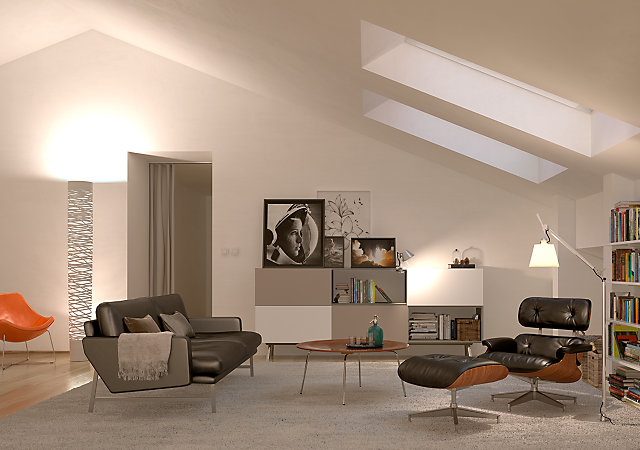
2.Brightness distribution
The composition of light and dark
Brightness is what your eyes perceive. It consists of the light emitted by the luminaire and the colour of the material the person is looking at.
Bright rooms are created by illuminating bright materials. This means that rooms seem bright when the walls and ceilings are bright and illuminated.Illuminating dark floors by means of
pendant lights, directed downwards, for instance, makes the same rooms seem dark, even if there is a great deal of light. The objective is to distribute the brightness harmoniously in order to make a room appear homey and comfortable. Both, a bright spot of light in dark surroundings as well as monotonously illuminated rooms, are unpleasant for the viewer. On the one hand, too sharp light-dark contrasts strain the eyes as they constantly need to adapt to the changing lighting conditions and get tired quickly. Monotonously illuminated rooms, on the other hand, are boring. The positive atmosphere and good mood fall by the wayside, the effect created resembles the atmosphere you known from cloudy days. Room lighting should therefore combine soft ambient lighting with focused zone lighting.
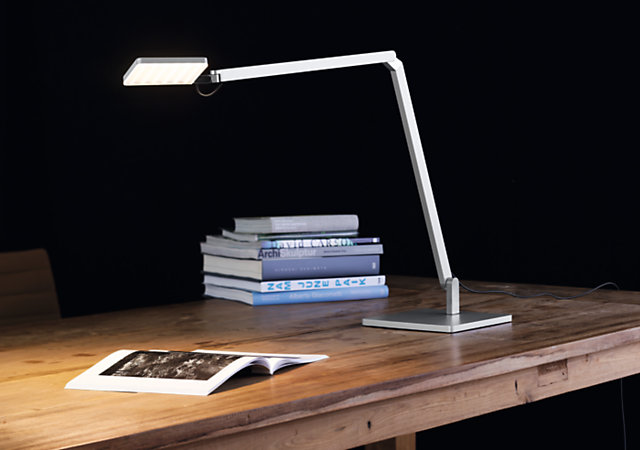
3. Illuminance
The volume of the light
The illuminance, measured in lux, should not be confused with the concept of brightness. Illuminance describes the amount of light emitted by a luminaire and does not say anything about how bright this light is. According to European standards, for instance, 500 lux are recommended for VDU workstations. A high level of illuminance is always essential wherever activities such as
working, drawing, doing handcrafts or DIY workcall for consistently good visibility. The luminaires recommended by light11 for various rooms and areas are selected in such a way that the ideal illuminance for the respective situation is ensured.

4. Colour of light
The difference between warm and cold
In terms of the colour of light it is distinguished between cold and warm light. It is determined by the colour spectrum which varies according to the illuminant. The colours red and blue are of major importance. The higher the red component in the light, the warmer the light; the proportion of blue light detemines how cold the light is. The colour of light is measured in degrees Kelvin (°K).
Light source
Kelvin
Colour component
Lighting effect
Candle
1,800 °K
extremely high red component
flattering, dim light
-
Incandescent lamp
2,700 °K
very high red component
warm, cosy light
-
Halogen lamp
3,000 °K
high red component
white, powerful light
-
Fluorescent lamp 840
4,000 °K
balanced blue and red component
neutral, clear light
-
Daylight
6,000 – 20,000 °K
high blue component
fresh, natural, energising light

5. Colour rendering
A spectrum of brilliant colours
Colour rendering determines whether the light makes the colours appear bright and vibrant or dull and soft. It is defined by the
illuminant (eg.(e.g. incandescent lamp, halogen lamp or fluorescent lamp). Luminaires are divided into colour rendering categories such as 1A, 1B, 2A, 2B and so on. Category 1A provides the best possible result in terms of colour rendering. Light11 generally recommends 1A colour rendering for the home. The exception is in the bathroom, where fluorescent luminaires and compact fluorescent luminaires are recommended as they provide extensive lighting with few shadows and thereby ensure the best illumination for faces. However, these luminaires usually work best with a colour rendering of 1B.

6. Shading
Vibrant rooms with light and shadows
Shadows do not mean darkness, they rather ensure living light. They help us to see things three-dimensionally and make sure that faces and objects are modelled and that surface textures and details become visible. Diffused, messy lighting devoid of shadows is perceived as unpleasant. However, very strong shadows with hard edges can also be annoying. The ideal shadows are well-balanced, allowing us to readily perceive forms and textures. Faces of friends sitting around the dining table, for instance, are thereby charmingly displayed. However, if shadows are very strong or non-existent these faces will look hard or pale.

7. Light direction
The length and position of shadows
The angle at which light strikes an object will determine the length and position of the shadows cast. The shallower the angle of incidence, the longer the shadows. Extremely long shadows, for example, on
kitchen worktops, desks or when reading while sitting on the sofa or the armchair can be very annoying - particularly when hands or other objects cast additional shadows onto the object being looked at. Thus, it is beneficial for people who are right-handed when the light is emitted at a shallow angle from the top left; those who are left-handed need the light to be emitted from the top right.

8. Light dynamics
Meeting individual requirements
Dynamic lighting can be adapted to meet individual requirements. It adapts to situations, activities, different times of day and different moods. The most important and popular device is the dimmer, which can be used, for example, to decide whether the luminaire above the sofa and the armchairs should emit powerful lighting for reading or cosy mood lighting. Modern workplace lights offer an intelligent solution for dynamic lighting as they automatically adapt to the intensity of the daylight. A constantly well-lit desk prevents tiredness and significantly improves performance. The latest trend in atmospheric lighting is the use of
LED lights. The special thing about these lights is that they offer the opportunity to adjust the colour of the light as desired. Corresponding remote controls with different lighting programmes allow for dynamic lighting. The luminaire then automatically follows the desired sequence and changes the colour in a lively manner.
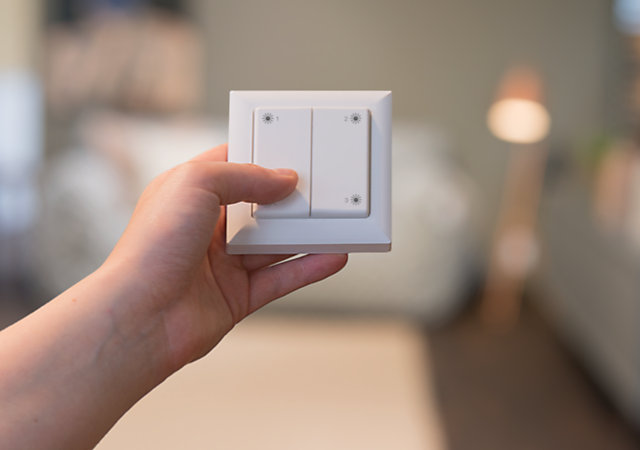
9. Operation
The right lighting - simply and quickly
Switching the light on and off may sound simple but it can be a complicated process. For example, when a floor lamp's switch is halfway down the power cable, it is impossible to reach it from the door or from the comfort of your seat. Intelligent locating of switches is therefore vital if we wish to achieve just the right lighting. Switches should be located where they are needed the most, e.g. as a flexible hand-held remote control or, of course, directly by the door. Cordless controls which can be installed anywhere provide for the greatest degree of comfort and convenience. We recommend lighting control systems which can be used to control all the lights in a room, especially in rooms with more than three luminaires. This will allow you to create different lighting moods with individual light scenes at the press of a button.
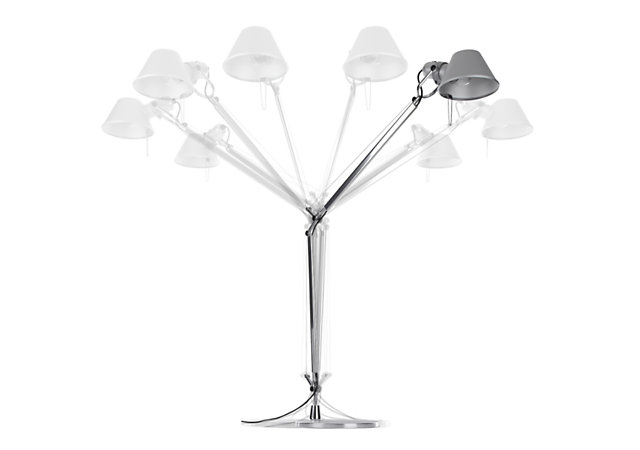
10. Flexibility
Variable pivoting for zone lighting
Flexibly adjustable in one, two, three or more directions. A luminaire that is extremely variable in terms of the light direction is suitable for versatile use. The light can be aligned in one direction or another, with greater or less focus, thereby ideally meeting a whole range of requirements. Be it pulling the desk lamp extremely close to be able to see every detail or directing the reading lamp next to your armchair or sofa towards the ceiling to create a pleasant, indirect light within your living room. Regardless of whether they are table lamps, floor lamps, wall lamps or pendant lamps, as long as luminaires are flexible they can offer a whole range of applications and create numerous different atmospheres.
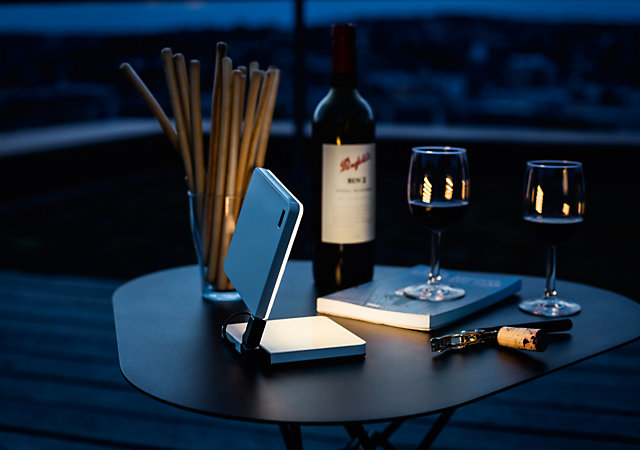
11. Mobility
For major and minor changes in position
High-quality lights will stay with you for life. This makes it even more important that these are easy to relocate when you are moving house, renovating or just because you feel like it. Clamp-on lamps, floor lamps and table lamps are particularly mobile in this respect. However, models which are mounted to the ceiling, walls or furniture can also be moved easily when they are simple to mount and demount. Branded products particularly stand out in this respect in comparison to bulk commodities. By offering durability, reliability and convenience, they clearly outlive other light fixtures available at furniture shops and provide real value for money.











